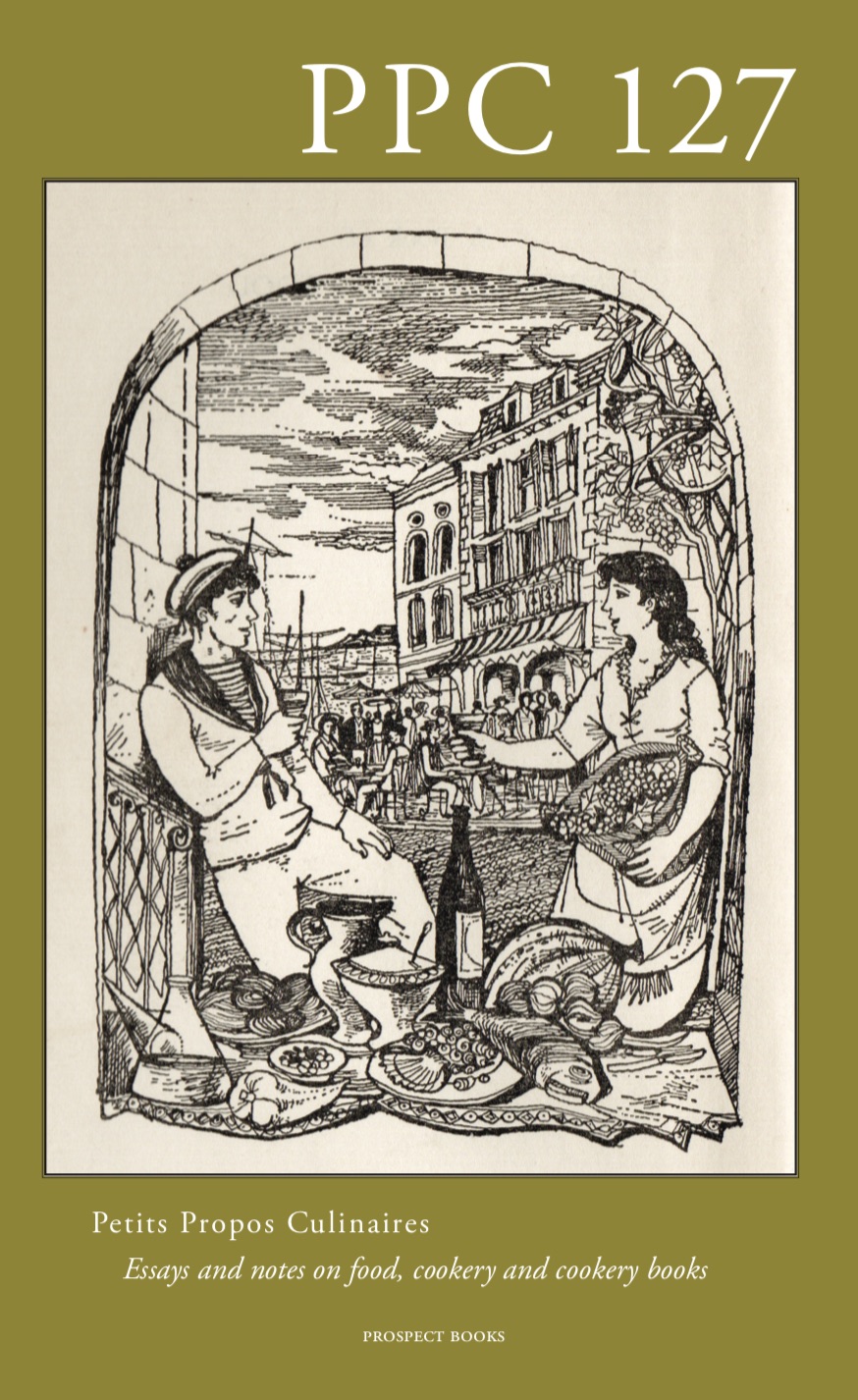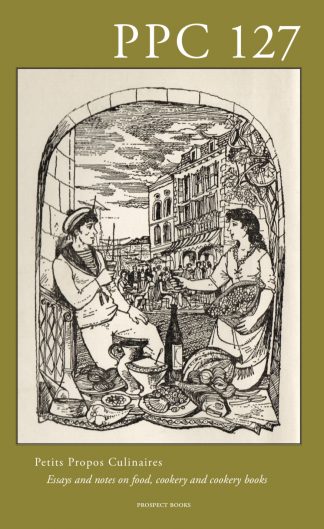Description
PPC 127 (December 2023)
|
PPC 127 has a brilliant article by Blake Perkins – he calls it a reappraisal of Elizabeth David – we call it an essential de-bunking of her reputation as the saviour of English cooking. Yes, what Britain ate in the 1940s and 50s was dull, and the joy of mediterranean sunlight and ingredients was a way away from our shores, hardly accessible to the English, with post-war recovery in process. You will need to read the article to see what Blake thinks of the recipes included in Elizabeth David’s books. And as for her actual life – a few eyebrows may raise as you read of her escapades. Also, she suffered ill health from the age of 49 from her ill advised life style, and this meant she had little sense of taste. Essential reading for all knowledgeable food historians.
A taster from The Boxty Paradox: Everything, Everywhere, All At Once by Mary-Anne Boermans.
This paper takes as its subject the Irish potato dish of Boxty and draws upon the thousands of transcripts available in the Irish National Folklore Collection (Schools) as its primary sources. Investigations reveal that, far from being a simple dish, the transcripts unveil dozens of different types of Boxty from all over the country, as well as the geographic spread of the many names by which a single style of Boxty is known. In addition, this unique collection of personal testimonies reveals just how inextricably intertwined Boxty is with the history, life, culture and traditions of the people of Ireland.
…
What’s in a name?
Each type/description of Boxty was recorded in terms of ingredients and cooking method. It quickly became evident that the recipes recorded for Boxty differed not only from Province to Province, but also from county to county and sometimes even within the counties themselves. Not only this, it also became clear that in various parts of the country broadly the same ingredients, method and cooking manner were being referred to under several different names:
She also told me how to make boxty-bread. First, peel raw potatoes, and grate them. Then mix with flour, and a little soda and salt, until it comes to a paste. Then bake on the griddle or pan. Mamie McGrain, Co. Meath
The principal ingredient of stampy were potatoes. Those were grated into pulp with a grater. The water and starch was squeezed out of them and flour was mixed with the pulp. They were kneeded into a dough like our bread of today. It was then placed on a griddle to bake. Mr Joseph O Neill, Co. Kerry
Scratch used to be made from potatoes. First of all the potatoes used to be grated then they used to be put into a cloth and squeesed and then mixed with flour. Then they used to be put on a griddle to bake. Mrs Delaney, Co. Clare
They also had bread called Buck-bread. This was made with potatoes and flour. The potatoes were grated on a bit of tin with holes made in it by a nail.When they had them grated they squeezed them in a bag to take the water out of them. They threw away the water and mixed the grated stuff with the flour. They used not wet the cake at all, as it used be wet enough from the raw potatoes. It used be baked on a gridiron. Tom Ryan, Co. Tipperary


